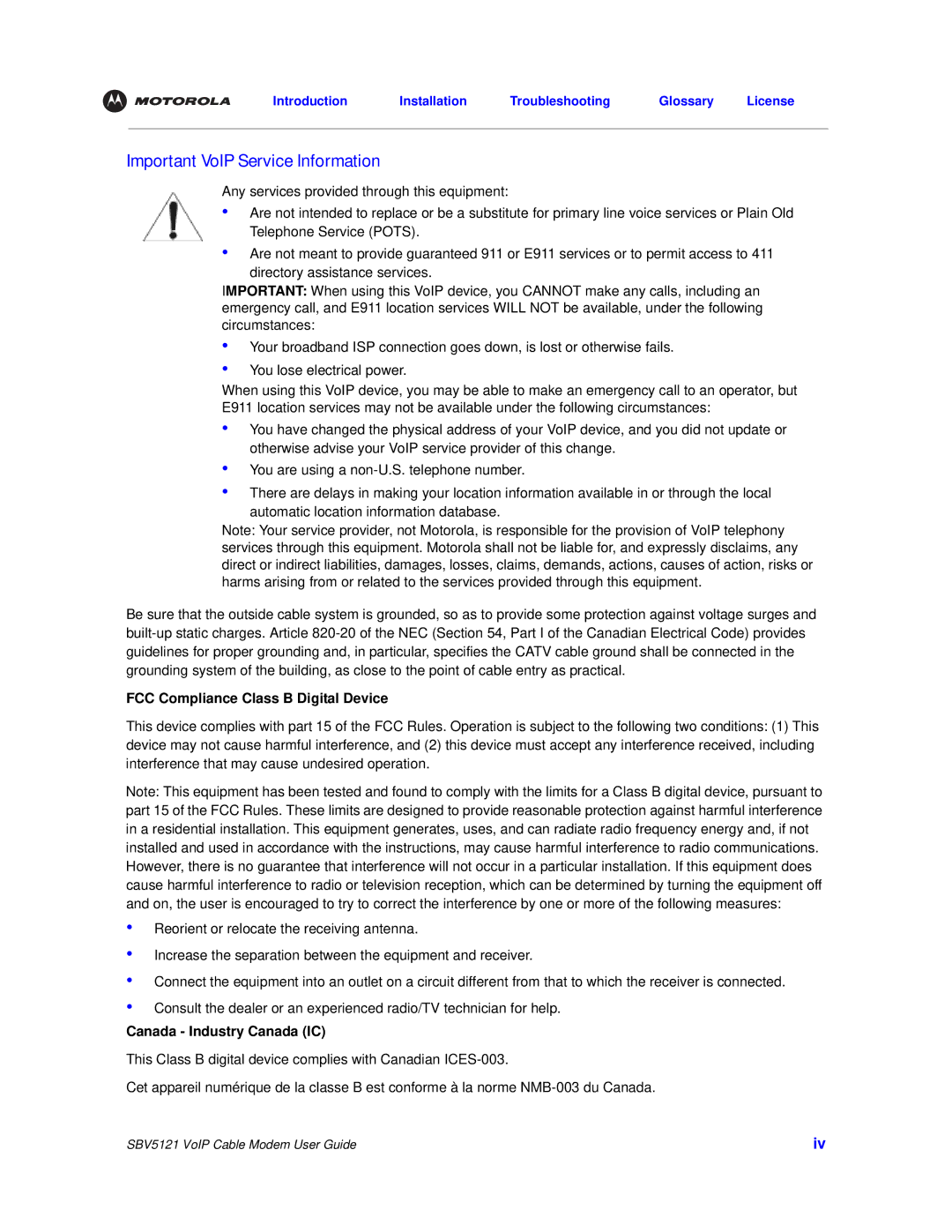
Introduction | Installation | Troubleshooting | Glossary | License |
Important VoIP Service Information
Any services provided through this equipment:
•Are not intended to replace or be a substitute for primary line voice services or Plain Old Telephone Service (POTS).
•Are not meant to provide guaranteed 911 or E911 services or to permit access to 411 directory assistance services.
IMPORTANT: When using this VoIP device, you CANNOT make any calls, including an emergency call, and E911 location services WILL NOT be available, under the following circumstances:
•Your broadband ISP connection goes down, is lost or otherwise fails.
•You lose electrical power.
When using this VoIP device, you may be able to make an emergency call to an operator, but
E911 location services may not be available under the following circumstances:
•You have changed the physical address of your VoIP device, and you did not update or otherwise advise your VoIP service provider of this change.
•You are using a
•There are delays in making your location information available in or through the local automatic location information database.
Note: Your service provider, not Motorola, is responsible for the provision of VoIP telephony services through this equipment. Motorola shall not be liable for, and expressly disclaims, any direct or indirect liabilities, damages, losses, claims, demands, actions, causes of action, risks or harms arising from or related to the services provided through this equipment.
Be sure that the outside cable system is grounded, so as to provide some protection against voltage surges and
FCC Compliance Class B Digital Device
This device complies with part 15 of the FCC Rules. Operation is subject to the following two conditions: (1) This device may not cause harmful interference, and (2) this device must accept any interference received, including interference that may cause undesired operation.
Note: This equipment has been tested and found to comply with the limits for a Class B digital device, pursuant to part 15 of the FCC Rules. These limits are designed to provide reasonable protection against harmful interference in a residential installation. This equipment generates, uses, and can radiate radio frequency energy and, if not installed and used in accordance with the instructions, may cause harmful interference to radio communications. However, there is no guarantee that interference will not occur in a particular installation. If this equipment does cause harmful interference to radio or television reception, which can be determined by turning the equipment off and on, the user is encouraged to try to correct the interference by one or more of the following measures:
•Reorient or relocate the receiving antenna.
•Increase the separation between the equipment and receiver.
•Connect the equipment into an outlet on a circuit different from that to which the receiver is connected.
•Consult the dealer or an experienced radio/TV technician for help.
Canada - Industry Canada (IC)
This Class B digital device complies with Canadian
Cet appareil numérique de la classe B est conforme à la norme
SBV5121 VoIP Cable Modem User Guide | iv |
